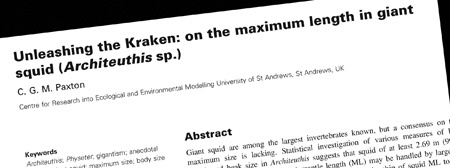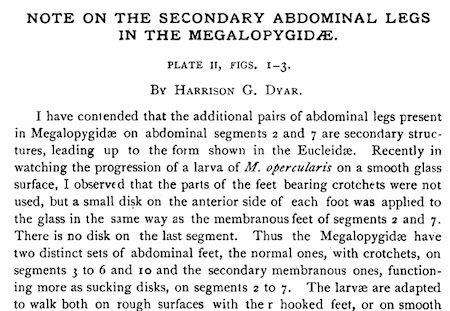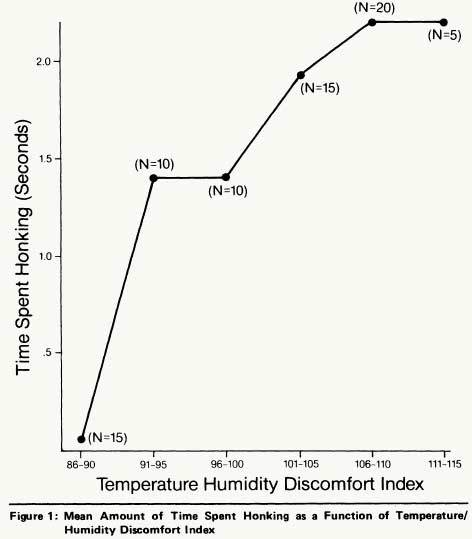Marc Abrahams's Blog, page 267
June 1, 2016
From ostrich-human courtship to squid possible gigantic-ness
Charles Paxton, the University of St. Andrews professor who shared the 2002 Ig Nobel biology prize for study called “Courtship Behaviour of Ostriches Towards Humans Under Farming Conditions in Britain” (published in British Poultry Science, vol. 39, no. 4, September 1998, pp. 477-481) has a new study out, about giant squid.
The new study seems to have enraged certain persons (see below).
The study is: “Unleashing the Kraken: on the maximum length in giant squid (Architeuthis sp.),” Charles G.M. Paxton, Journal of Zoology, epub 17 May 2016. Here’s what it says:
Giant squid are among the largest invertebrates known, but a consensus on their maximum size is lacking. Statistical investigation of various measures of body length and beak size in Architeuthis suggests that squid of at least 2.69 m (99.9% prediction interval: 1.60–3.83 m) mantle length (ML) may be handled by large bull sperm whales but perhaps not females. Given the relationship of squid ML to standard (from tip of mantle to end of arms) and total (from tip of mantle to end of tentacles) length, the observed spread of individual lengths, along with a longest reliably measured ML of 2.79 m, purported squid of 10 m standard length and even 20 m total length are eminently plausible.
Michael Greshko writes, for National Geographic, about the study and the varied reactions to it:
Giant Squid Could Be Bigger Than a School Bus
The deep-dwelling creatures could reach lengths of at least 66 feet, says a provocative new study—but not everyone is convinced….Paxton’s results, published on May 17 in the Journal of Zoology, have released a kraken of controversy: At present, there’s no physical evidence that the giant squid (Architeuthis dux) actually gets as large as Paxton is claiming, leading some to doubt the study’s real-world relevance. (See National Geographic’s squid pictures.)
“This paper will certainly boost his citation indices, but probably for all the wrong reasons,” wrote giant squid expert Steve O’Shea, who wasn’t involved with the study….
Rebecca Goldin, a professor of mathematics at George Mason University and director of STATS.org, finds Paxton’s statistical arguments to be sound, though recommends caution in applying the results.
“My takeaway is that the author has a point: The variability is high enough that whales may have eaten larger squid than so far found,” Goldin, who wasn’t involved with the study, said by email.
BONUS: Charles Paxton’s discoveries are wide-ranging. A few years ago, he published a study pointing out that one celebrated historical account of a “sea monster” may have been a misunderstanding on the part of the observer. What the observer saw was (the study explains) most likely a whale’s erect penis.

Contagious yawning in the red-footed tortoise? (podcast 66)
Contagious yawning in the red-footed tortoise — or rather, lack of contagious yawning in the red-footed turtle, becomes a matter of high drama in this week’s Improbable Research podcast.
SUBSCRIBE on Play.it, iTunes, or Spotify to get a new episode every week, free.
This week, Marc Abrahams — with dramatic readings by Daniel Rosenberg — tells about:
Contagious Yawning in Tortoises? — “No Evidence of Contagious Yawning in the Red-Footed Tortoise Geochelone carbonaria,” Anna Wilkinson, Natalie Sebanz, Isabella Mandl, and Ludwig Huber, Current Zoology 57 (4): 2011, pp. 477–84. This research led to an Ig Nobel Prize in 2011. Here’s a photo of Anna Wilkinson and a research tortoise:
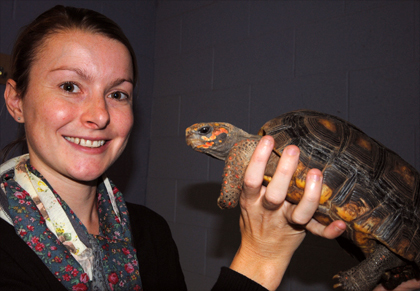
Contagious Yawning in Other Animals? — “Some Comparative Aspects of Yawning in Betta splendens, Homo sapiens, Panthera leo, and Papio sphinx,” Ronald Baenninger, Journal of Comparative Psychology 101 (4), 1987, pp. 349–54.
Chickens Prefer Beautiful Humans — “Chickens Prefer Beautiful Humans,” Stefano Ghirlanda, Liselotte Jansson, and Magnus Enquist, Human Nature 13 (3): 2002, pp. 383–8. This research led to an Ig Nobel Prize in 2003.
The mysterious John Schedler or the shadowy Bruce Petschek perhaps did the sound engineering this week.
The Improbable Research podcast is all about research that makes people LAUGH, then THINK — real research, about anything and everything, from everywhere —research that may be good or bad, important or trivial, valuable or worthless. CBS distributes it, on the CBS Play.it web site, and on iTunes and Spotify).

May 31, 2016
The senator whose method is: Make people LAUGH, NOT THINK
U.S. Senator Jeff Flake has appropriated and dismembered our basic goal and method, which is to make people LAUGH, and then THINK. The senator lopped off the “think” part, to produce his own basic goal and method: to make people Laugh, and NOT think. You can see this on display in Senator Flake’s recent colorful press release and booklet, which ridicules scientific research.
We invented the phrase “make people LAUGH, then THINK”. It’s the essence of our magazine, the Annals of Improbable Research. It’s the essence of the Ig Nobel Prize Ceremony, which we administer, and which is now in its 26th year. Each year ten Ig Nobel Prizes are awarded for achievements that make people LAUGH, then THINK. Much of the research ridiculed in Senator Flake’s booklet has won Ig Nobel Prizes.
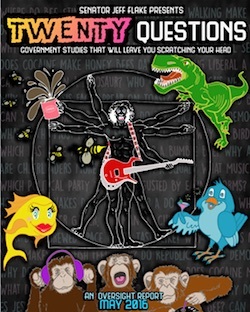
Senator Flake’s booklet
Senator Flake’s Cartoon Book
Senator Flake’s press release says: “U.S. Sen. Jeff Flake (R-Ariz.) today released Twenty Questions: Government Studies That Will Leave you Scratching Your Head, an oversight report highlighting 20 hard-to-justify, taxpayer-funded studies that diverted more than $35 million that could have been better spent researching treatments for cancer, Alzheimer’s disease, and viral infections such as Zika and Ebola….”
Senator Flake’s booklet uses a cartoon style that’s usually meant to appeal to small children. You can download a copy of the the booklet by clicking on the image here.
Hard to Justify
The studies mentioned in Senator Flake’s booklet really are, as Senator Flake says, “hard-to-justify” — if, like Senator Flake, you insist on not justifying them.
Senator Flake and Einstein
Senator Flake’s booklet builds, it says, on the work of Einstein:
“The important thing is not to stop questioning,” urged Albert Einstein, one of the greatest minds of all time. That’s great advice for taxpayers.
Here’s what Senator Flake’s booklet does not mention: Einstein would ask lots of funny questions, and then Einstein would work to FIND THE ANSWERS to those questions.
Senator Flake’s funny booklet just asks a funny question, then laughs, then asks some other funny question, then laughs, then asks some other funny question, and so on, and so on.
Senator Flake’s booklet asks 20 questions. About one third of those questions concern research that was honored with Ig Nobel Prizes, or scientists who earned Ig Nobel Prizes for other research.
Senator Flake’s BIG RED DOLLAR AMOUNTS
Senator Flake’s booklet uses a technique that makes things appear horribly expensive. The table of contents lists a BIG RED DOLLAR AMOUNT next to each research item. You might mistakenly think that that this BIG RED DOLLAR AMOUNT is what the research item cost. You would be wrong. The booklet diligently explains — on a different page, in small, dense text — that the BIG RED DOLLAR AMOUNT is just a BIG RED DOLLAR AMOUNT:
METHODOLOGY. Specific dollar amounts expended to support each study were not available for the projects profiled in this report. Most were conducted as parts of more extensive research funded with government grants or financial support. The costs provided, therefore, represent the total amount of the grant or grants from which the study was supported and not the precise amount spent on the individual studies. This is not intended to imply or suggest other research supported by these grants was wasteful, unnecessary or without merit.
Here are some of the first items in Senator Flake’s booklet. (Each of these was awarded an Ig Nobel Prize, by the way!):
1) WHERE DOES IT HURT THE MOST TO BE STUNG BY A BEE? ($1 MILLION)
2) WHY DOES WALKING WITH COFFEE CAUSE IT TO SPILL? ($172,000)
7) WHY DOES THE FACE OF JESUS APPEAR ON TOAST? ($3.5 MILLION)
If you apply this same BIG RED DOLLAR AMOUNT technique to Senator Flake’s own booklet, here’s what you get:
SEN. FLAKE’S “TWENTY QUESTIONS” BOOKLET ($8 MILLION)
What’s It All About?
Three of the items in Senator Flake’s booklet are research performed by Professor David Hu of Georgia Tech:
7) HOW MANY SHAKES DOES IT TAKE FOR A WET DOG TO DRY OFF? ($390,000)
17) WHICH HAS MORE HAIRS, A SQUIRREL OR A BUMBLEBEE? ($753,000)
18) HOW LONG DOES IT TAKE TO PEE LIKE A RACE HORSE? ($331,000)
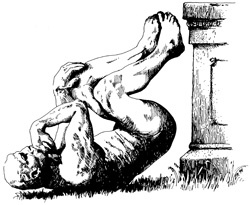
The logo of Improbable Research and of the Ig Nobel Prizes
Professor Hu and his team were awarded an Ig Nobel Prize for that pee research. Professor Hu wrote an essay about this, for Scientific American. What he wrote will probably make you laugh, then think. We suggest you read it:
Confessions of a Wasteful Scientist
Three of my projects appeared last week on a senator’s list of questionable research. Allow me to explain …
But, if you like to ridicule things because those things are unfamiliar, don’t read Professor Hu’s writing. And don’t look at the actual work of the other Ig Nobel Prize winners or any of the other people on Senator Flake’s list.
If you want to laugh, but not think, pay attention to Senator Flake.

Things to say, professionally, of small significance
The Still Not Significant blog lists lots of ways to mutter, in professional language, if your research findings are statistically marginal. Among them:
What to do if your p-value is just over the arbitrary threshold for ‘significance’ of p=0.05? … The solution is to apply the time-honoured tactic of circumlocution to disguise the non-significant result as something more interesting. The following list is culled from peer-reviewed journal articles in which (a) the authors set themselves the threshold of 0.05 for significance, (b) failed to achieve that threshold value for p and (c) described it in such a way as to make it seem more interesting:
a borderline significant trend (p=0.09)
a clear trend (p
a clear, strong trend (p=0.09)
a decreasing trend (p=0.09)
a definite trend (p=0.08)
a favorable trend (p=0.09)
a favourable statistical trend (p=0.09)
a little significant (p
a marginal trend (p=0.09)
a marked trend (p=0.07)
a mild trend (p
a near-significant trend (p=0.07)
a negative trend (p=0.09)
a nonsignificant trend (p
a notable trend (p
…
[see the original article for the full list]

May 30, 2016
Car Horn Honking Studies (part 2)
Although car horn honking might be viewed by some as a measure of aggression it can also have its positive side. For example in driving simulators, where participants sometimes drive more slowly than they would do on a real road (when not attending to driving) – maybe a horn honk would encourage them to drive more realistically? Investigators Heejin Jeong and Paul Green of the University of Michigan, Industrial and Operations Engineering dept., and the Transportation Research Institute (Driver Interface Group), experimentally tested such a scenario.
A fixed-base National Advanced Driving Simulator MiniSim was used in these experiments (see Figure 2). If drivers were performing manoeuvres that were deemed to be too slow (or too close to other virtual vehicles) they were automatically subjected to honking.
“The 300 ms horn sound sequence consisted of two 100 ms beeps separated by 100 ms. The sound was typical of a car in the U.S. and was found on the Internet. See http://www.soundboard.com/sb/Car_Horn_Sounds for an example.“
The results showed that :
“The number of honks per subject varied from 0 to 6 for driving too slowly (less than 25 mi/hr) and 0 to 8 for delayed responses when a traffic light changed from red to green. Older drivers received 2.4 times more honks than younger drivers.”
Lending support to the hypothesis that virtual honking may help to encourage more realistic driving behaviour in simulators :
“Within 5 s after the following vehicle honked between intersections, the mean speed driven increased by 5 mi/hr.”
See: ‘Honking Helps Overcome the Driving Too Slowly Problem in Driving Simulators’ in: Proceedings of the Human Factors and Ergonomics Society Annual Meeting, September 2015, vol. 59 no. 1 1646-1650.
Note: Anecdotal rumours recently heard by Improbable suggest that honking might currently be on the rise in some countries – due a habit that some drivers have acquired: checking their smartphone messages at traffic lights. If you can confirm this, please comment below.

May 29, 2016
How well scientists understand how to figure out how the brain works…
 An essay (in The Elusive Self blog) about a demonstration of how little anyone really understands how the brain works:
An essay (in The Elusive Self blog) about a demonstration of how little anyone really understands how the brain works:
False functional inference: what does it mean to understand the brain?
A few days ago Eric Jonas and Konrad Kording [pictured here] (J&K) posted a thought-provoking paper on bioRxiv entitled “Could a neuroscientist understand a microprocessor?” It’s been circling round my head for most of the weekend, and prompted some soul searching about what we’re trying to achieve in cognitive neuroscience.
The paper reports on a mischievous set of experiments in which J&K took a simulation of the MOS 6502 microchip (which ran the Apple I computer, and which has been the subject of some fascinating digital archaeology by the http://www.visual6502.org/ team), and then analysed the link between it’s function and behaviour much as we might do for the brain in cognitive and systems neuroscience. The chip’s “behaviour” was its ability to boot and run three different sets of instructions for different games: Donkey Kong, Space Invaders and Pitfall (as a side note, exploring this sent me down the rabbit hole of internet emulations including this one of Prince of Persia which occupied many hours of my childhood). While their findings will not necessarily be surprising for a chip designer, they are humbling for a neuroscientist.
By treating the chip like a mini-brain, albeit one in which the ground truth was fully known, J&K could apply some canonical analysis techniques and see what they revealed. The bottom line is that for most of these analyses, they were either downright misleading or ended up producing trivial results….
(Thanks to Chris Frith for bringing this to our attention.)
BONUS: A recent essay by Robert Epstein, in Aeon: “The empty brain — Your brain does not process information, retrieve knowledge or store memories. In short: your brain is not a computer“

A rather colorful insectivorist
Ryan P. Smith, writing in Smithsonian magazine, tells of the book that tells of “The Bizarre Tale of the Tunnels, Trysts and Taxa of a Smithsonian Entomologist“:
A new book details the sensational exploits of Harrison G. Dyar, Jr., a scientist who had two wives and liked to dig tunnels
Dyar instigated fiery feuds with his fellow entomologists. He was concurrently married to two different women. And he dug elaborate, electric-lit tunnels beneath two of his D.C. residences, disposing of the dirt in a vacant lot, or else passing it off as furnace dust or fertilizer.
Long after his death, there were whispers that the tunnels had enabled him to shuttle between his lovers—an urban legend that, while apocryphal, speaks to the mystery in which Dyar seems perennially shrouded…
BONUS: One of our favorites of Dyar’s many scholarly publications: “Note on the secondary abdominal legs in the Megalopygidae,” Harrison G. Dyar, Journal of the New York Entomological Society, vol. 7, no. 2 (1899): 69-70.

May 28, 2016
Pedestrian Potential-Collision Standoffs, and Symmetry Breaking
We’ve all experienced this phenomenon: you and someone else are walking towards each other in opposite directions, and you don’t want to collide. Do you shift to the left or to the right? And how should you shift to avoid a standoff? In a new paper on the arXiv, physicists Nickolas Morton and Shaun Hendy of the Department of Physics at University of Auckland have examined this problem through the lens of statistical mechanics. Here is an excerpt from their abstract:
If both make the same choice then passing can be completed with ease, while if they make opposite choices an embarrassing stand- off or collision can occur. Pedestrians who encounter each other frequently can establish “social norms” that bias this decision. In this study we investigate the effect of binary decision-making by pedestrians when passing on the dynamics of pedestrian flows in order to study the emergence of a social norm in crowds with a mixture of individual biases. (…) We construct a phase diagram that shows that a social norm can still emerge provided pedestrians are sufficiently attentive to the choices of others in the crowd. We show that this collective behaviour has the potential to greatly influence the dynamics of pedestrians, including the breaking of symmetry by the formation of lanes.
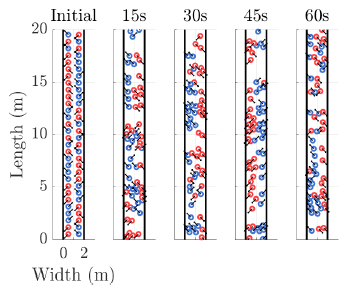

Dead Duck Day, June 5th, honoring homosexual necrophilia in the mallard
 Sunday, June 5th, 2016 is the 21st edition of Dead Duck Day, arriving precisely one year after last year’s Dead Duck Day. At exactly 17:55 h [Rotterdam time] we will honor the mallard duck that became known to science as the first (documented) ‘victim’ of homosexual necrophilia in that species, and earned its discoverer the 2003 Ig Nobel Biology Prize.
Sunday, June 5th, 2016 is the 21st edition of Dead Duck Day, arriving precisely one year after last year’s Dead Duck Day. At exactly 17:55 h [Rotterdam time] we will honor the mallard duck that became known to science as the first (documented) ‘victim’ of homosexual necrophilia in that species, and earned its discoverer the 2003 Ig Nobel Biology Prize.
Dead Duck Day also commemorates the billions of other birds that die from colliding with glass buildings, and challenges people to find solutions to this global problem.
Please join the free, short open-air ceremony next to the new wing of the Natural History Museum Rotterdam (the Netherlands), right below the new Dead Duck Memorial Plaque— the very spot where that duck (now museum specimen NMR 9989-00232) met his dramatic end.

Sarah Forbes
This is what will happen:
The traditional Ten Seconds of Silence.
Review of this year’s necrophilia news: two new clear cases in birds became known to science, and the first case in a Dutch mammal (!) will be revealed.
The reading of the special ‘Dead Duck Day Message’. This years message is send in by Sarah Forbes, former curator of the Museum of Sex (MoS) in New York and author of the book ‘Sex in the Museum’.
The announcement of the second performance of ‘The Homosexual Necrophiliac Duck Opera’ in London, on sacred grounds, June 24th, 2016.
The first-ever Dead Duck Day Fashion Show. The first batch of t-shirts, designed by Mark Prinsen, will be for sale.
A six-course duck dinner, after the ceremony.
The traditional six-course (dead) duck dinner at the famous Tai Wu Restaurant is also open to the public (at your own expense). Reserve you seat by e-mailing to: info [at] hetnatuurhistorisch.nl
BONUS: More on the history of Dead Duck Day on the official Dead Duck Day website: www.deadduckday.com
BONUS: Here is Kees Moeliker’s TED Talk about the dead duck:

May 27, 2016
Car Horn Honking Studies (part 1)
Anyone who has driven a vehicle in various different countries might have observed that the national rate of ‘horn honking’ varies considerably – but why? A widely-cited study by Douglas T. Kenrick and Steven W. MacFarlane (published in 1986) investigated whether one simple variable – temperature – might be having an effect.
The team organised that a “female confederate” driving a Datsun 200SX would repeatedly perform a potentially irritating manoeuvre at a set of traffic lights in Pheonix Arizona.
“When the light turned red, she moved her car to the head of the intersection and waited for a subject to pull in behind her. The confederate then waited for the light to turn green and remained stationary throughout the 12-second course of the light.
The confederate was instructed to keep still, with her eyes forward, car in neutral, foot off the brake, and her hands on steering wheel. Once the green light had changed, the confederate made a legal* right turn on the red light.”
An observer recorded how long the cars which were behind her spent honking their horns. 75 such tests were conducted between April and August, when the “Temperature Humidity Discomfort Index” varied from 86º to 116º (Fahrenheit).
“Results indicated a direct linear increase in horn honking with increasing temperature. Stronger results were obtained by examining only those subjects who had their windows rolled down (and presumably did not have air conditioners operating).”
See: ‘Ambient Temperature and Horn Honking : A Field Study of the Heat/Aggression Relationship’ in: Environment and Behavior, March 1986 vol. 18 no. 2 179-191.
* Question [optional]: Under what circumstances is it possible to make “a legal right turn” on a red light?
Coming soon: Horn Honking part 2

Marc Abrahams's Blog
- Marc Abrahams's profile
- 14 followers


